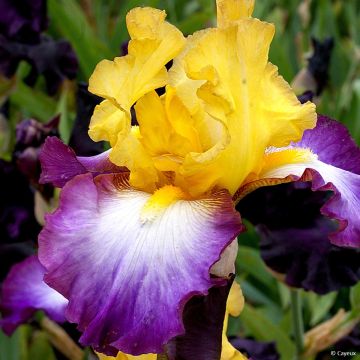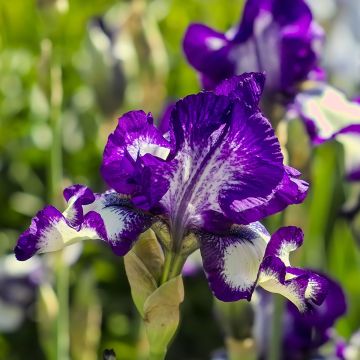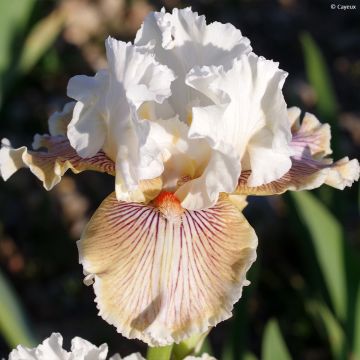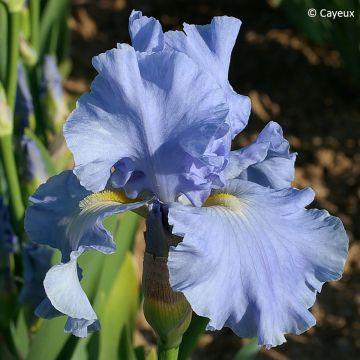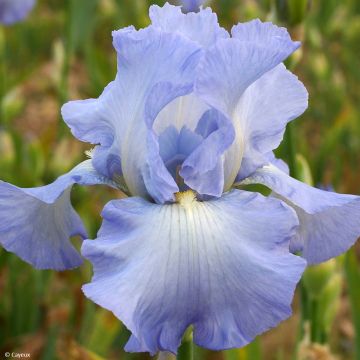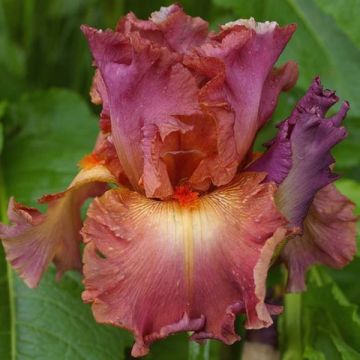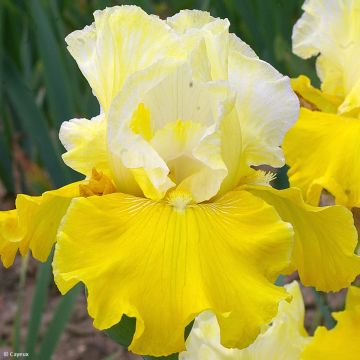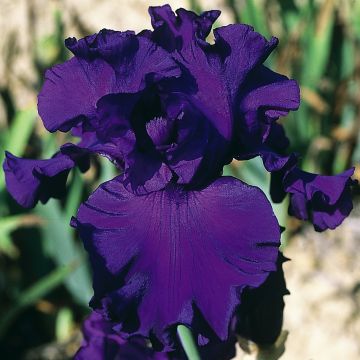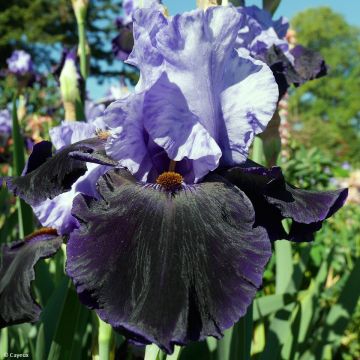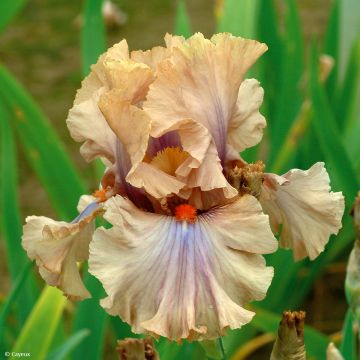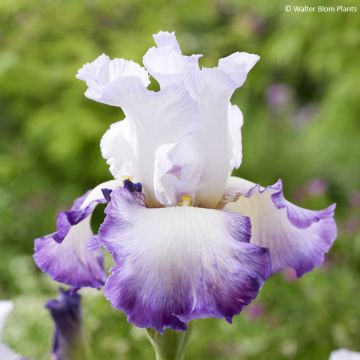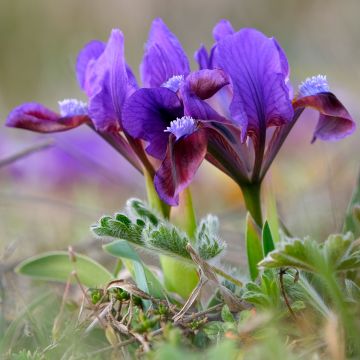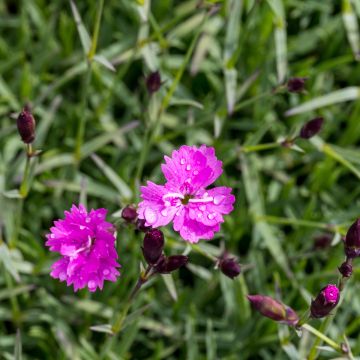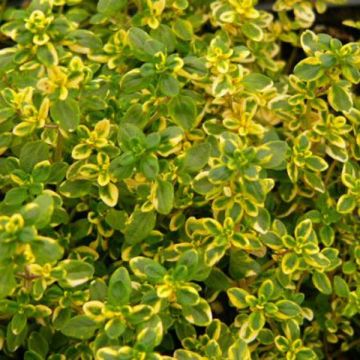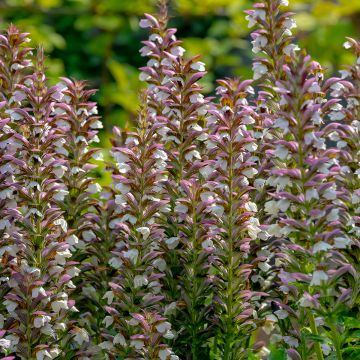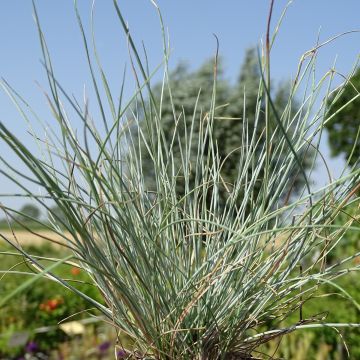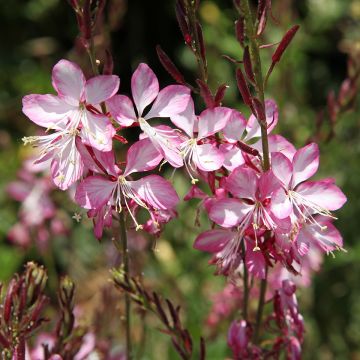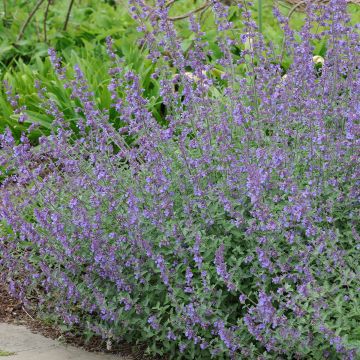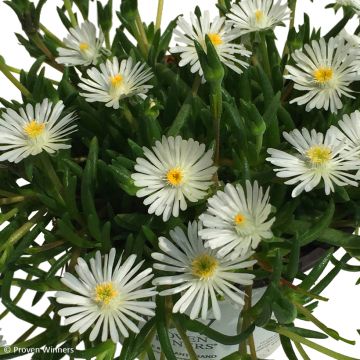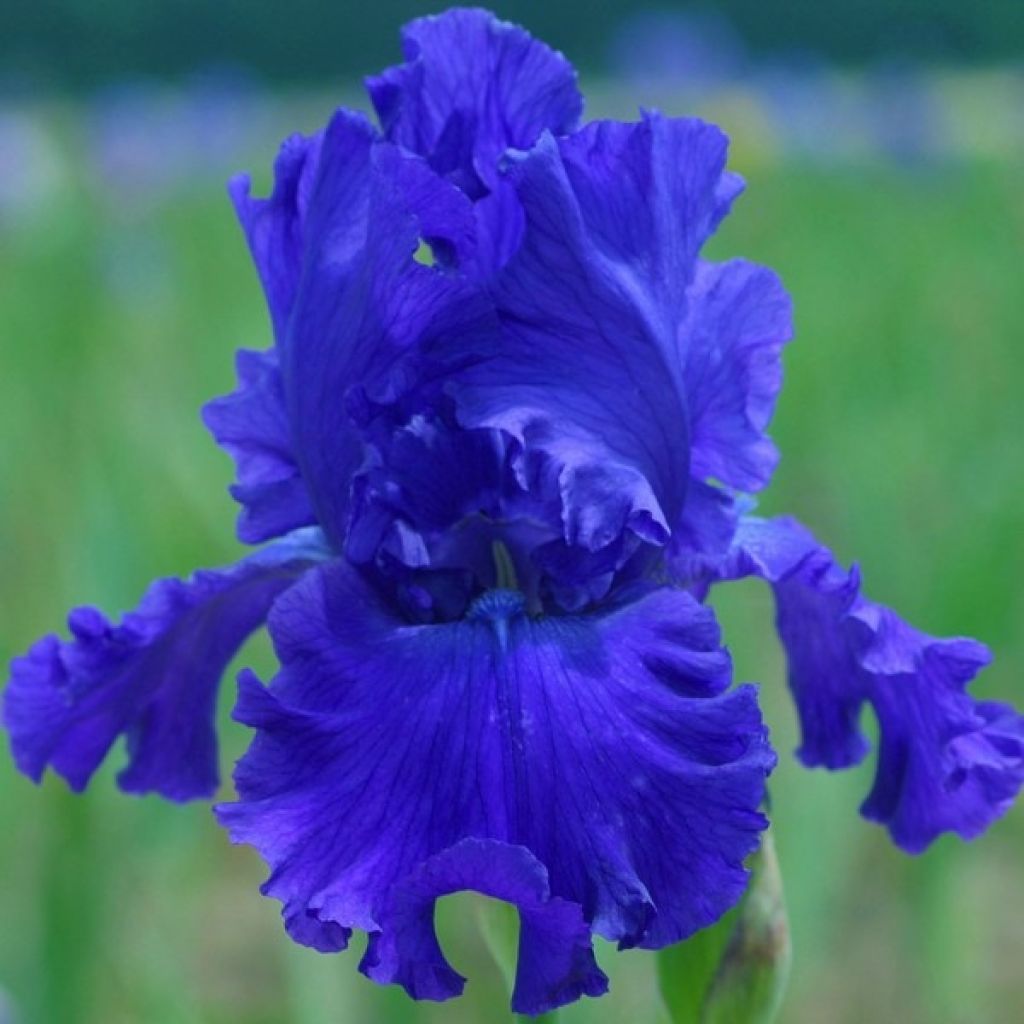

Iris germanica Blue Crusader - Bearded Iris
Iris germanica Blue Crusader - Bearded Iris
Iris germanica Blue Crusader
German Iris, Bearded Iris
I received 6 rootstocks on 09/08, they were planted on 12/08/22 in the morning when it was cool. My additional feedback will be provided in 2023. The plant I purchased in 2021 died.
Michel, 12/08/2022
Special offer!
Receive a €20 voucher for any order over €90 (excluding delivery costs, credit notes, and plastic-free options)!
1- Add your favorite plants to your cart.
2- Once you have reached €90, confirm your order (you can even choose the delivery date!).
3- As soon as your order is shipped, you will receive an email containing your voucher code, valid for 3 months (90 days).
Your voucher is unique and can only be used once, for any order with a minimum value of €20, excluding delivery costs.
Can be combined with other current offers, non-divisible and non-refundable.
Why not try an alternative variety in stock?
View all →This plant carries a 12 months recovery warranty
More information
We guarantee the quality of our plants for a full growing cycle, and will replace at our expense any plant that fails to recover under normal climatic and planting conditions.

Would this plant suit my garden?
Set up your Plantfit profile →
Description
Iris germanica 'Blue Crusader' is undoubtedly one of the most beautiful "blues" that can be found among the Grand Garden Irises. With an extraordinary vigour, this powerful plant bears on very tall and thick stems up to 9 impressive pyramid-shaped flowers, all with undulating, thick substance, and a superb deep blue shaded with almost uniform violet. 'Blue Crusader', a magnificent blue knight, concludes the season of Iris germanica in June. Such a marvel deserves a prominent place in a sunny flowerbed or in a large rock garden.
'Blue Crusader' is a perennial rhizomatous plant that develops in elegant clumps starting from spring, with its foliage disappearing in winter. It belongs to the family of Iridaceae. It is one of the many cultivars obtained over centuries, whose controversial origin is discussed around the number of chromosomes of potential ancestors. It should be noted that Garden Irises have European origins. They are plants of limestone soils, thirsty for sun, whose rhizomes must 'bake' in summer in order to flower. A minimum of 6 hours of sun per day is generally required.
'Blue Crusader' will reach at least 1m (3ft) in height when flowering, up to 1.07m (3ft) in good conditions. Its branched flower stem carries at least 8 flower buds. The clump will spread without a theoretical limit over time, with the central rhizomes thinning out in favour of the outer rhizomes. The foliage consists of long and wide sword-shaped leaves, a somewhat glaucous green, traversed by parallel veins. In April-May, sturdy flower stems appear, which will give very large flowers in June blooming from the top to the lower branches. The deep blue colour of this plant is, as always with Garden Irises, magnified by the thick and iridescent texture of the upright petals and the trailing sepals.
Obtained by Schreiner (USA), 1998.
Instead of planting all your irises in a homogeneous flowerbed, plant them in small clusters among other perennials to extend the flowering period of your flowerbeds. To accompany the irises, choose plants to associate based on their needs (exposure, soil...), their "respectful" growth habit towards irises (low plants or light foliage), and their decorative complementarity (appearance, flowering period). For example, Gaura plants will provide little shade to the irises and will keep the deflowered iris flowerbed attractive throughout the summer. Botanical tulips, early tulips, and Eschscholzia will also thrive in a dry summer soil like the iris. Geraniums and autumn asters that are not demanding (laevis, turbinellus) also complement irises very well. Slopes and restanque edges can be stabilized by a dense planting of old diploid varieties that can remain in place and require little care. If the goal is more decorative and access for care is possible, you can choose more modern varieties, for example intermediates that are less likely to be literally flattened by wind and rain.
At the base of a wall, the relative shelter from the wind allows for the use of tall irises. Of course, shorter and early varieties can be planted in the foreground.
Border of a pathway: the realm of dwarf early irises less than 40cm (16in) in height, up to intermediates (in height and earliness) and border irises, medium-sized but flowering with the tall ones.
Border of a flowerbed: the domain of irises...border irises but also dwarf ones, depending on the circumstances.
Mixed border: the entire range of sizes can be used, chosen according to the space (foreground, background) and the size of the surrounding plants.
Iris flowerbed, iris garden: the paradise of iris enthusiasts where the choice of varieties (shape, colour, fragrance...) reflects each person's taste. The use of the entire range of bearded irises allows for two and a half months of flowers in spring. The choice of so-called re-blooming irises offers a few additional flowers in late summer or autumn, depending on the climate.
The vegetable garden can be embellished with a few clumps or borders of irises as it is also the classic place for the family cultivation of cut flowers.
Everyone knows Iris germanica, which has become world-famous thanks to the paintings of Van Gogh and Monet. Its popularity is due to its unique graphic design.
Its wide, rigid sword-shaped leaves contrast with crumpled, multicolored flowers perched high. The flowers have the peculiarity of forming three large upright petals and three silky trailing sepals, called "beard". The flowering lasts a few weeks in May/June. This Iris has large fleshy rhizomes creeping on the ground. It loves light, heat, and light, well-drained soils. It is not afraid of cold or summer drought, its enemy is humidity, especially in heavy soils. Superb in a sunny flowerbed, it is also highly appreciated for making bouquets.
The variety of Garden Iris 'Blue Crusader' measures 100cm (39in) in height. It bears dark blue to violet petals.
Very resistant, it should be exposed to full sun, in a rather dry and well-drained soil.
Place the 'Blue Crusader' Iris in a flowerbed or border, accompanied by yarrows, Alliums, Stipas, or roses. It is preferable to scatter them in groups of 3 or alone instead of creating homogeneous iris flowerbeds.
Iris germanica Blue Crusader - Bearded Iris in pictures
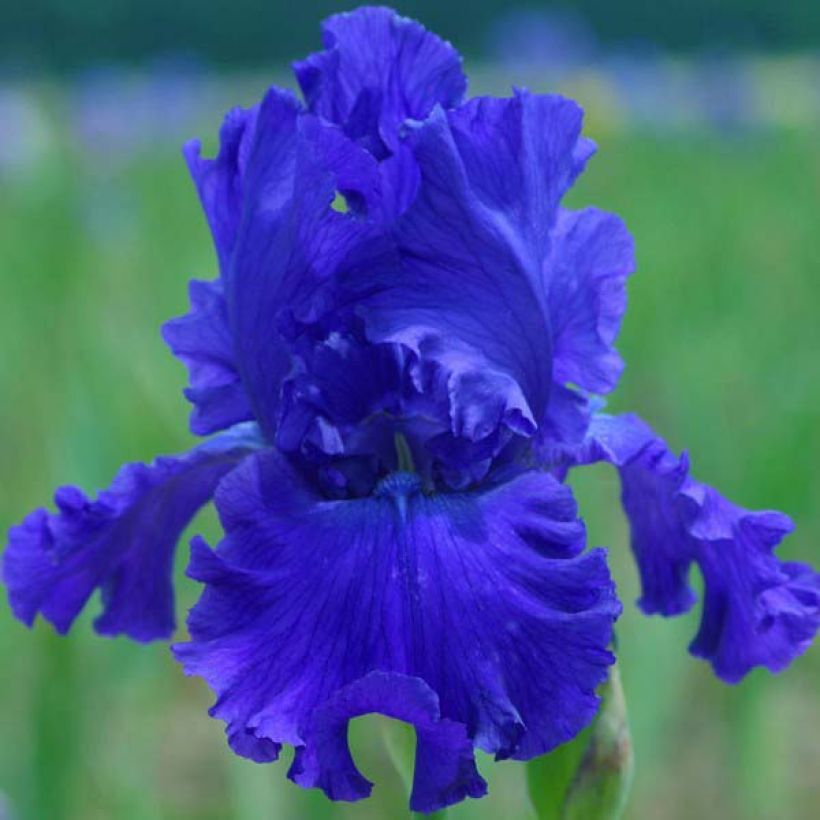

Flowering
Foliage
Plant habit
Botanical data
Iris
germanica
Blue Crusader
Iridaceae
German Iris, Bearded Iris
Cultivar or hybrid
Other German Iris - Bearded Iris
View all →Planting and care
Do you have a sunny location, sheltered from the wind, warm and rather dry in summer?
This is the ideal location for planting tall iris! In the shade, they grow but do not bloom. They are cultivated in all regions. Hardy, they do not need winter protection. Well-drained soil is perfect, even if it is rather dry. German iris require a limestone soil: amend your soil with lime if it tends to be acidic. Excessively moist soil promotes rhizome rot. Plant from July to September. This allows the rhizomes to grow sufficiently before digging them up and develop new roots before winter. They should be planted immediately after purchase for best results. Plan to divide the iris every 4 years or so to give them fresh soil. They have vigorous growth and require space to develop and flower well. They are planted with spacing appropriate to the size and vigour of the variety: about 34-50cm (13-20in) for tall ones (5 to 10 plants per square metre). In a monochrome planting, the rhizomes are planted in a staggered pattern. To create a mix of colours, it is recommended for the overall aesthetic of the iris bed to plant them in groups of several plants of the same variety. Always consider the direction of rhizome growth by arranging them in a star shape, with buds and leaves facing outward, and spacing them well from other varieties so they have room to grow.
Planting:
Dig a hole that is wide and deep enough. Make a wide conical mound of soil in the hole, on which the rhizome and spread-out roots are placed. Cover the roots. It is important that the rhizome is left just above the surface of the soil. It should not be planted in a depression (risk of rot), so anticipate that the soil will settle and the iris will sink. In clay or moist soil, the rhizome may even be left raised on a slight mound of a few centimeters. To make the soil adhere to the roots, lightly tamp the soil and water it abundantly immediately after planting. Water 2-3 times if necessary until establishment.
Maintenance:
Keep the soil free of weeds by shallow hoeing, taking care not to damage the rhizomes or roots. Weeds shade the iris, retain moisture (causing rot), and attract slugs. Likewise, remove dry leaves. If they are diseased (reddish-brown bordered spots of heterosporiosis), burn them. Remove faded flowers.
Planting period
Intended location
Care
Planting & care advice
-
, onOrder confirmed
Reply from on Promesse de fleurs
Similar products
Haven't found what you were looking for?
Hardiness is the lowest winter temperature a plant can endure without suffering serious damage or even dying. However, hardiness is affected by location (a sheltered area, such as a patio), protection (winter cover) and soil type (hardiness is improved by well-drained soil).

Photo Sharing Terms & Conditions
In order to encourage gardeners to interact and share their experiences, Promesse de fleurs offers various media enabling content to be uploaded onto its Site - in particular via the ‘Photo sharing’ module.
The User agrees to refrain from:
- Posting any content that is illegal, prejudicial, insulting, racist, inciteful to hatred, revisionist, contrary to public decency, that infringes on privacy or on the privacy rights of third parties, in particular the publicity rights of persons and goods, intellectual property rights, or the right to privacy.
- Submitting content on behalf of a third party;
- Impersonate the identity of a third party and/or publish any personal information about a third party;
In general, the User undertakes to refrain from any unethical behaviour.
All Content (in particular text, comments, files, images, photos, videos, creative works, etc.), which may be subject to property or intellectual property rights, image or other private rights, shall remain the property of the User, subject to the limited rights granted by the terms of the licence granted by Promesse de fleurs as stated below. Users are at liberty to publish or not to publish such Content on the Site, notably via the ‘Photo Sharing’ facility, and accept that this Content shall be made public and freely accessible, notably on the Internet.
Users further acknowledge, undertake to have ,and guarantee that they hold all necessary rights and permissions to publish such material on the Site, in particular with regard to the legislation in force pertaining to any privacy, property, intellectual property, image, or contractual rights, or rights of any other nature. By publishing such Content on the Site, Users acknowledge accepting full liability as publishers of the Content within the meaning of the law, and grant Promesse de fleurs, free of charge, an inclusive, worldwide licence for the said Content for the entire duration of its publication, including all reproduction, representation, up/downloading, displaying, performing, transmission, and storage rights.
Users also grant permission for their name to be linked to the Content and accept that this link may not always be made available.
By engaging in posting material, Users consent to their Content becoming automatically accessible on the Internet, in particular on other sites and/or blogs and/or web pages of the Promesse de fleurs site, including in particular social pages and the Promesse de fleurs catalogue.
Users may secure the removal of entrusted content free of charge by issuing a simple request via our contact form.
The flowering period indicated on our website applies to countries and regions located in USDA zone 8 (France, the United Kingdom, Ireland, the Netherlands, etc.)
It will vary according to where you live:
- In zones 9 to 10 (Italy, Spain, Greece, etc.), flowering will occur about 2 to 4 weeks earlier.
- In zones 6 to 7 (Germany, Poland, Slovenia, and lower mountainous regions), flowering will be delayed by 2 to 3 weeks.
- In zone 5 (Central Europe, Scandinavia), blooming will be delayed by 3 to 5 weeks.
In temperate climates, pruning of spring-flowering shrubs (forsythia, spireas, etc.) should be done just after flowering.
Pruning of summer-flowering shrubs (Indian Lilac, Perovskia, etc.) can be done in winter or spring.
In cold regions as well as with frost-sensitive plants, avoid pruning too early when severe frosts may still occur.
The planting period indicated on our website applies to countries and regions located in USDA zone 8 (France, United Kingdom, Ireland, Netherlands).
It will vary according to where you live:
- In Mediterranean zones (Marseille, Madrid, Milan, etc.), autumn and winter are the best planting periods.
- In continental zones (Strasbourg, Munich, Vienna, etc.), delay planting by 2 to 3 weeks in spring and bring it forward by 2 to 4 weeks in autumn.
- In mountainous regions (the Alps, Pyrenees, Carpathians, etc.), it is best to plant in late spring (May-June) or late summer (August-September).
The harvesting period indicated on our website applies to countries and regions in USDA zone 8 (France, England, Ireland, the Netherlands).
In colder areas (Scandinavia, Poland, Austria...) fruit and vegetable harvests are likely to be delayed by 3-4 weeks.
In warmer areas (Italy, Spain, Greece, etc.), harvesting will probably take place earlier, depending on weather conditions.
The sowing periods indicated on our website apply to countries and regions within USDA Zone 8 (France, UK, Ireland, Netherlands).
In colder areas (Scandinavia, Poland, Austria...), delay any outdoor sowing by 3-4 weeks, or sow under glass.
In warmer climes (Italy, Spain, Greece, etc.), bring outdoor sowing forward by a few weeks.






























